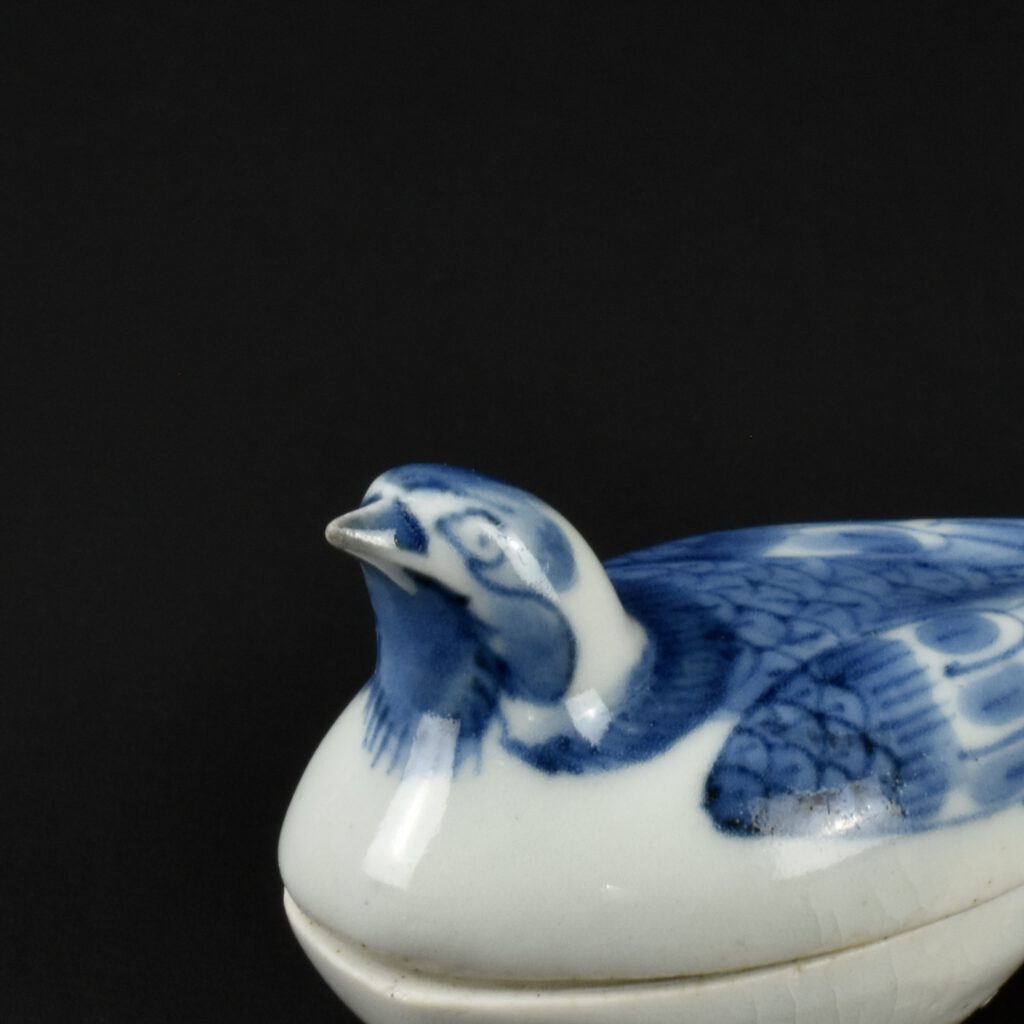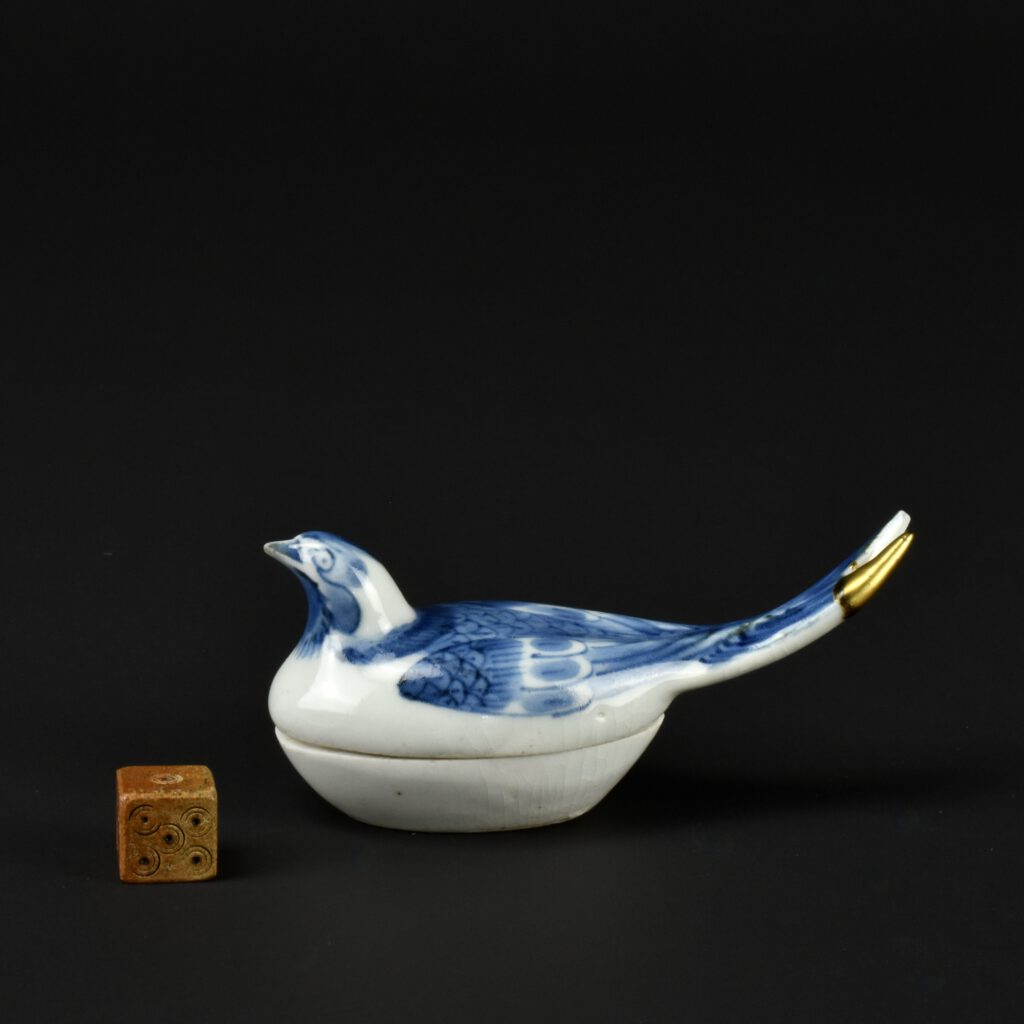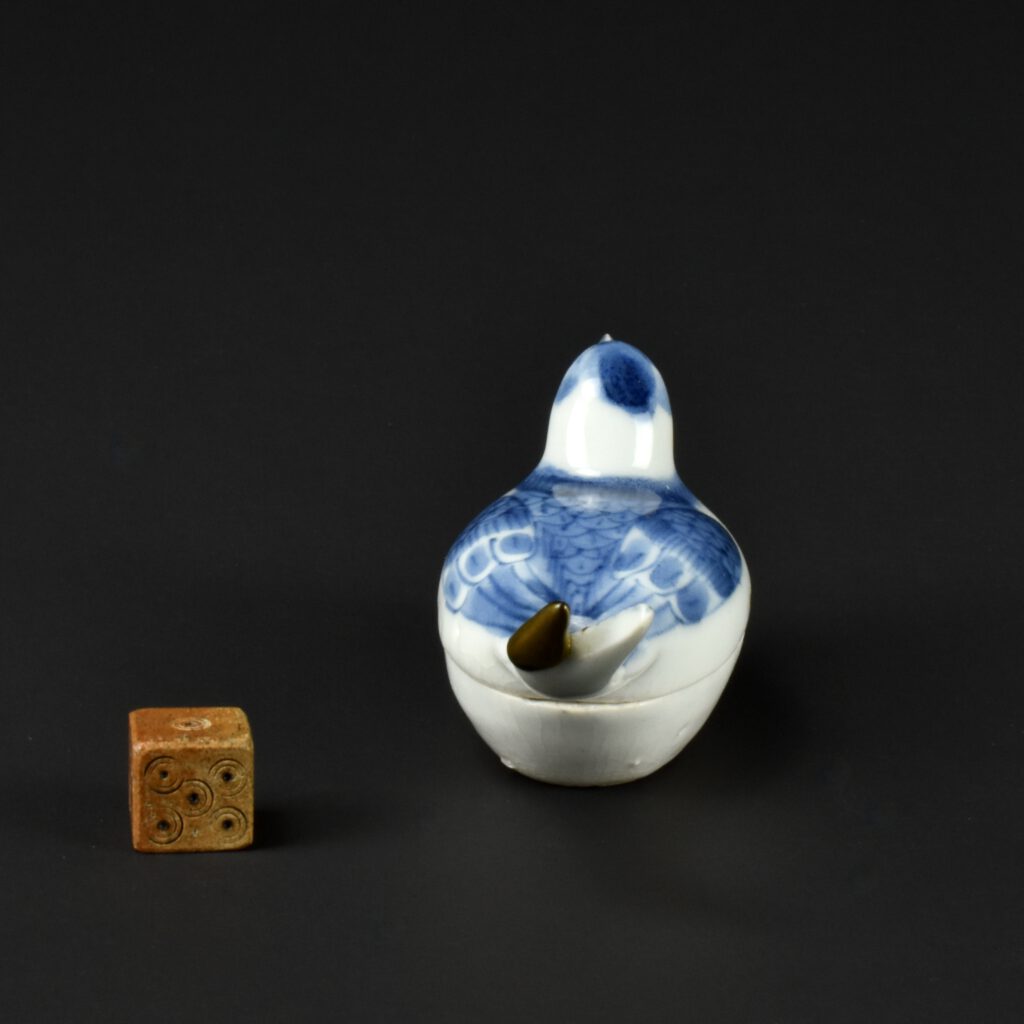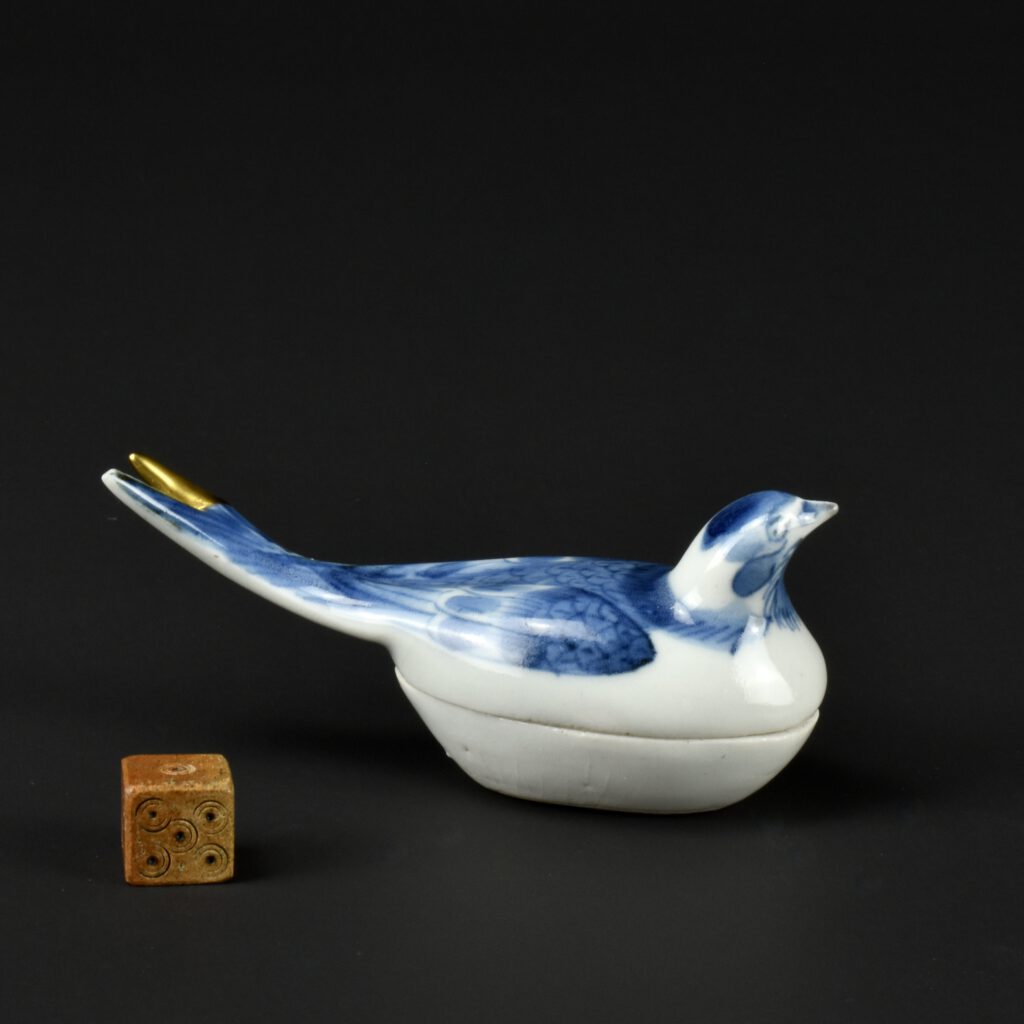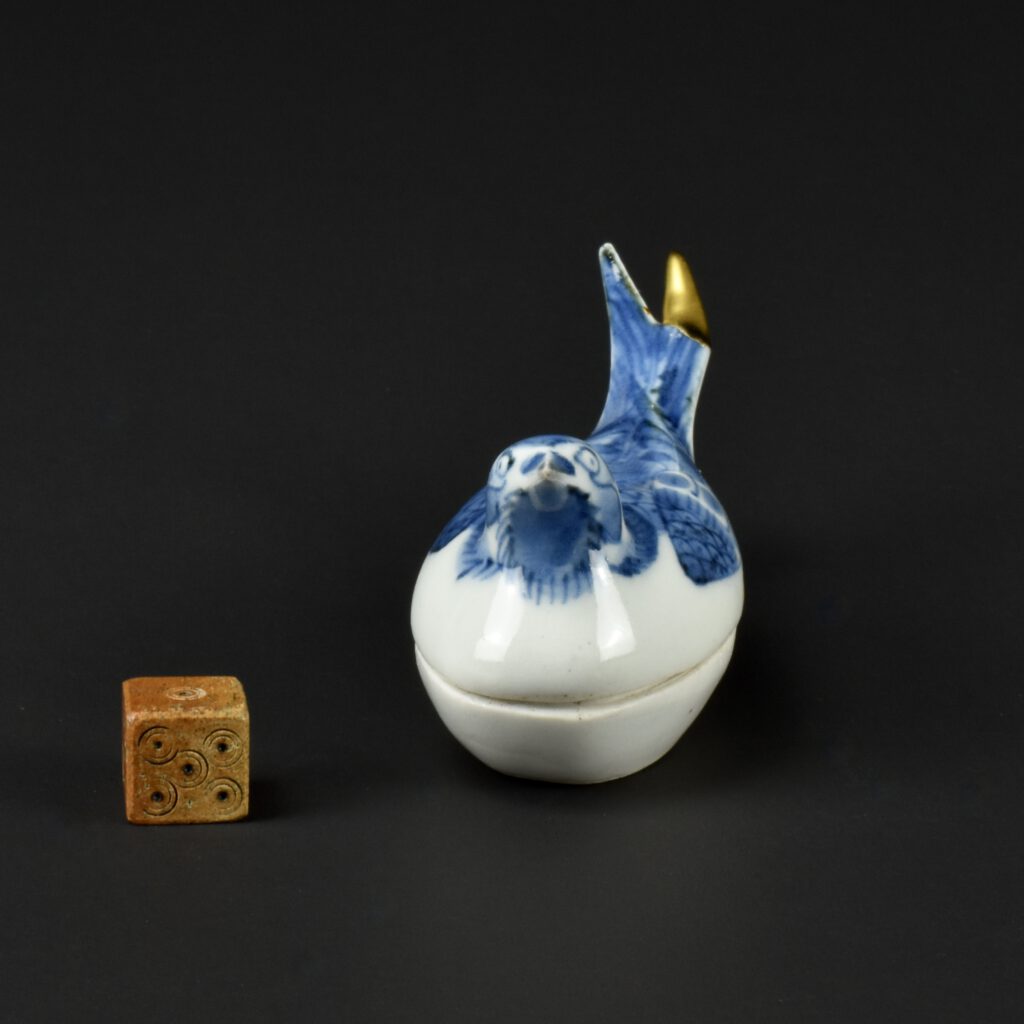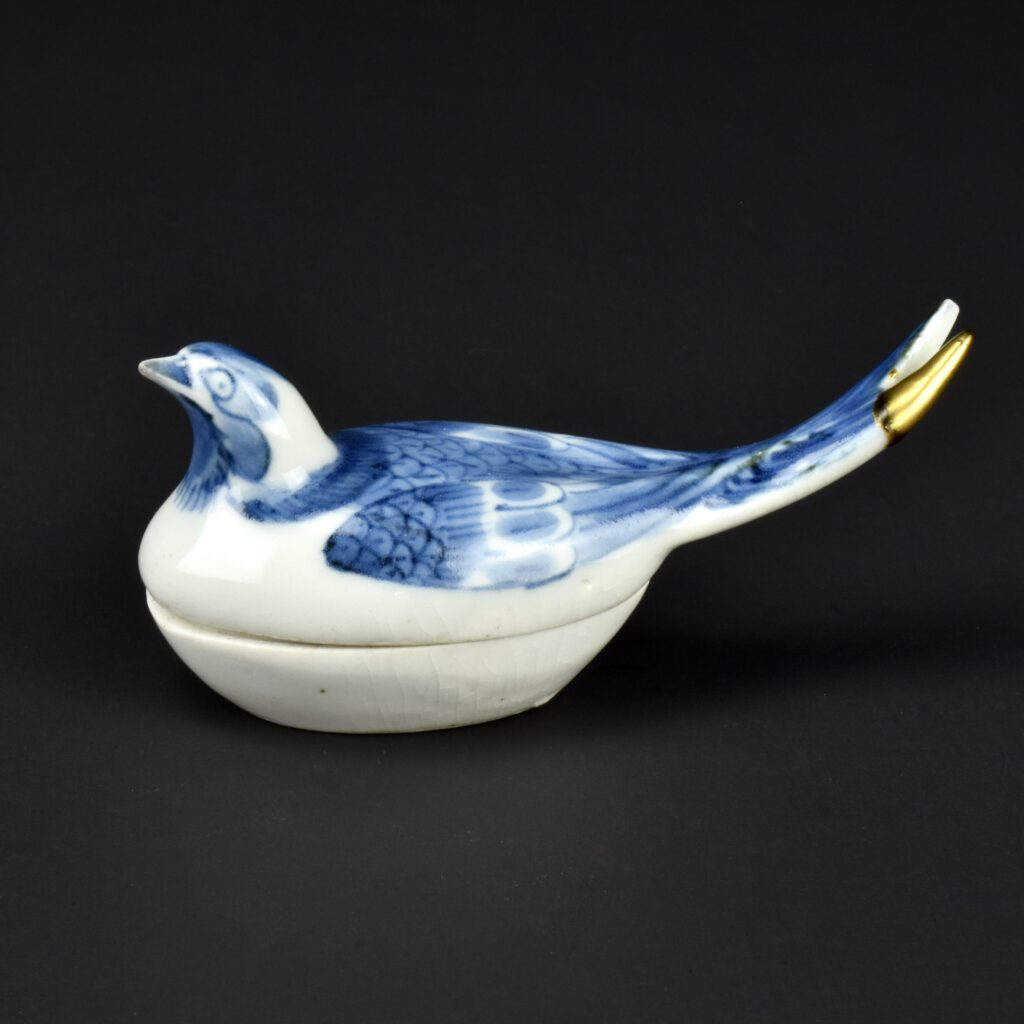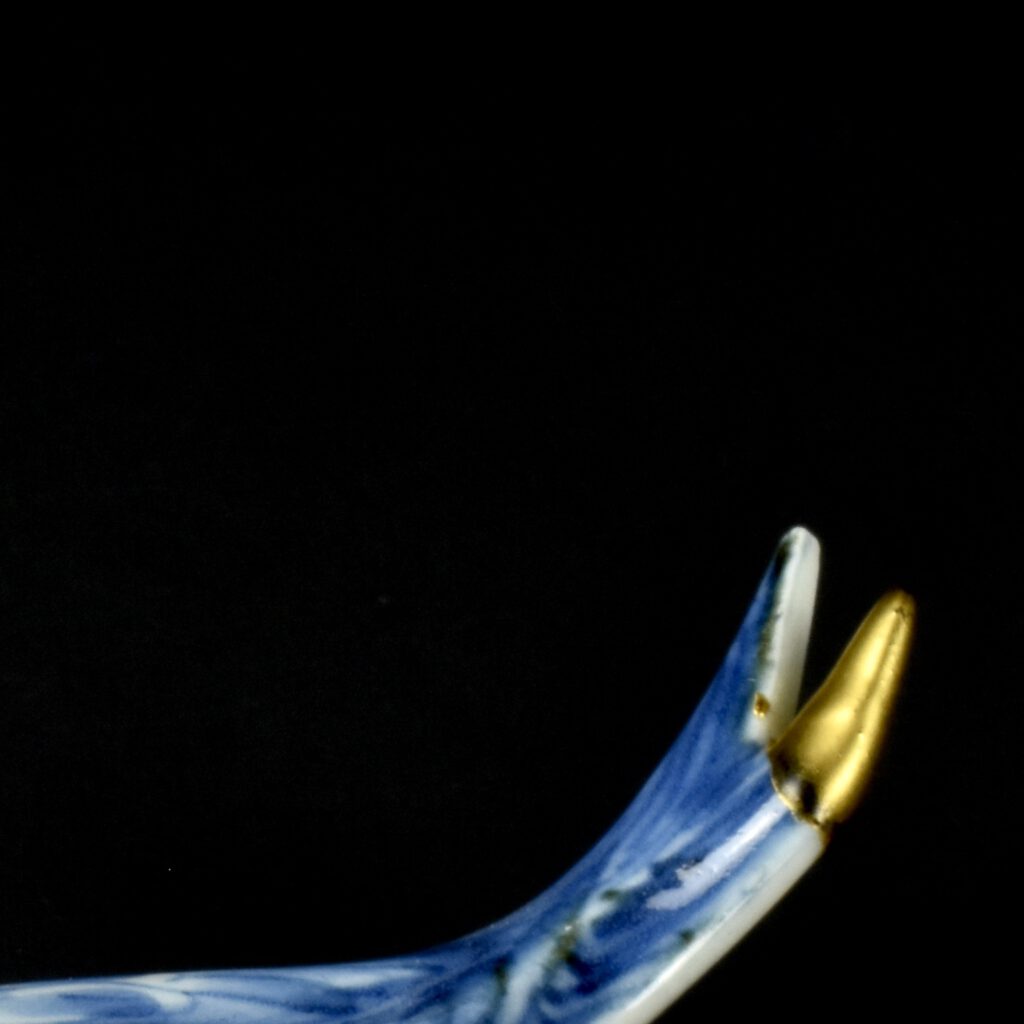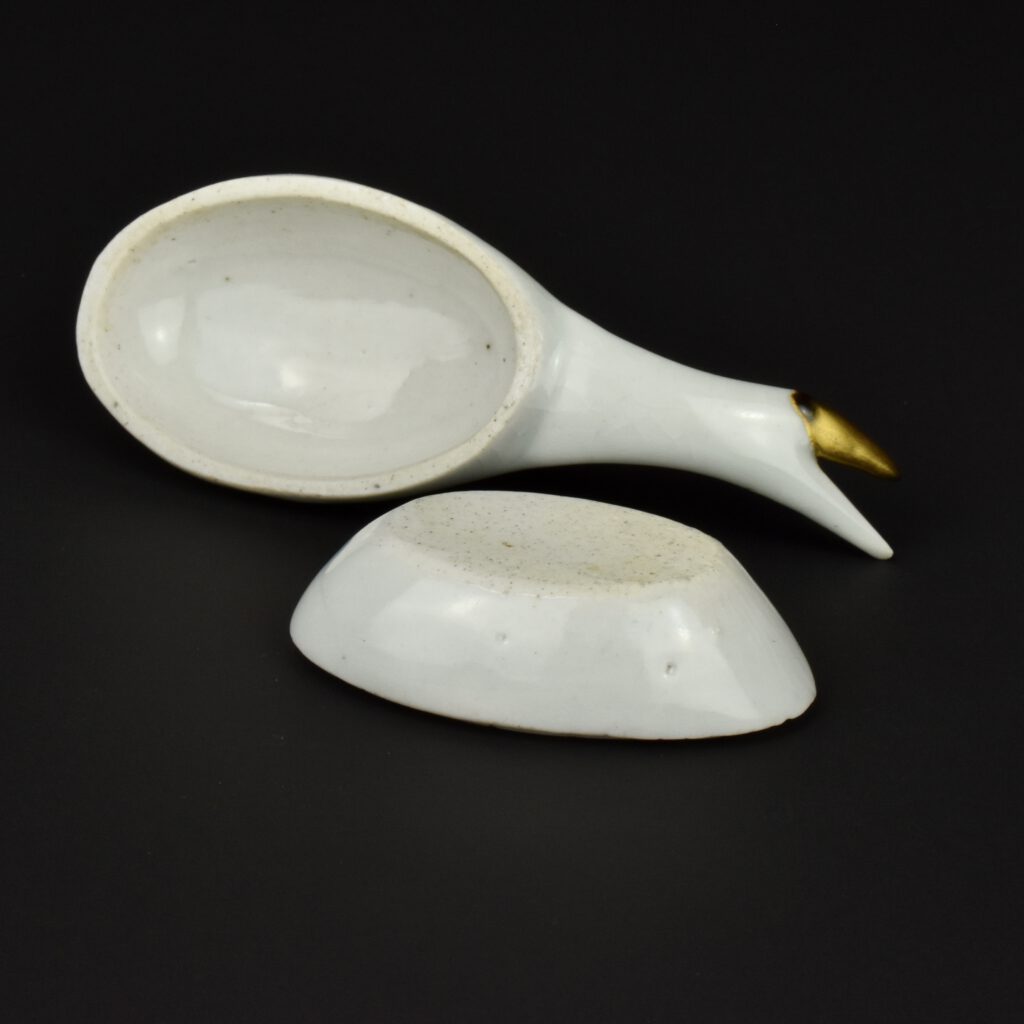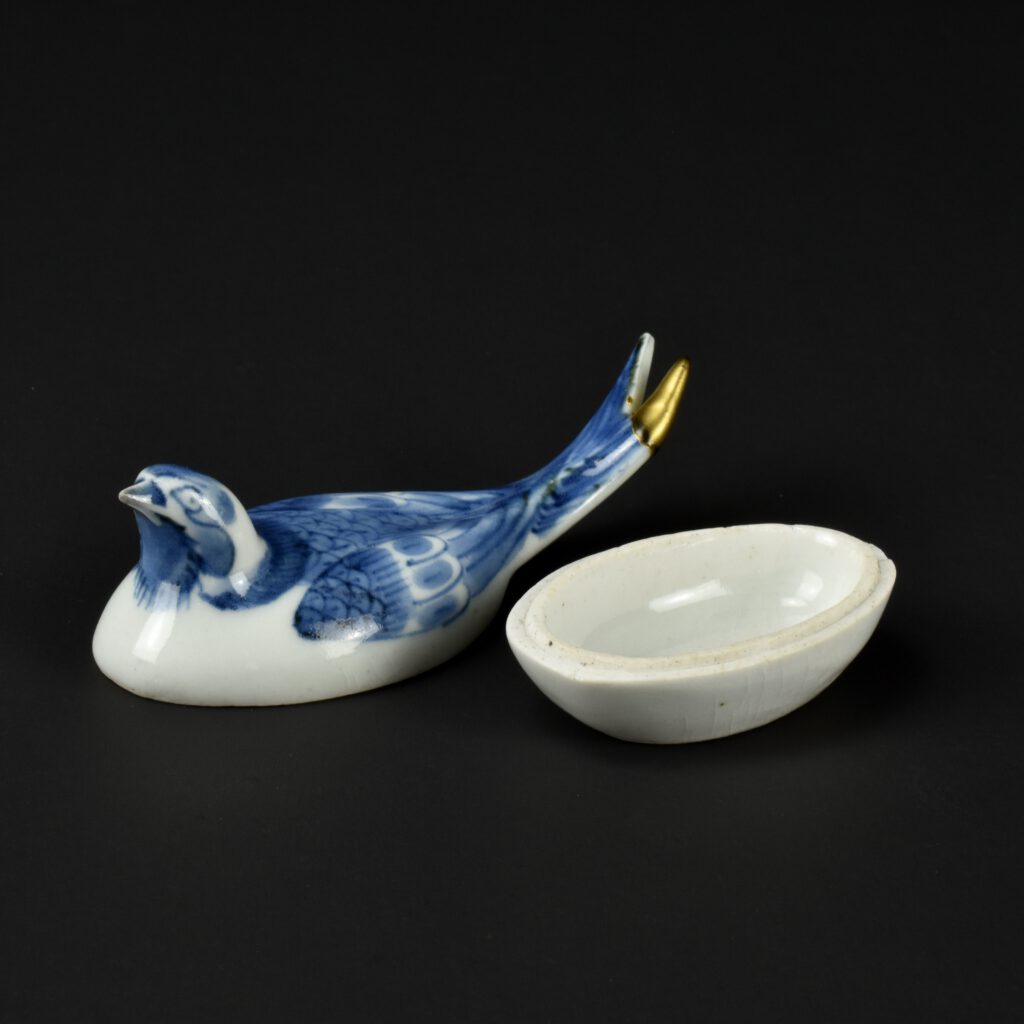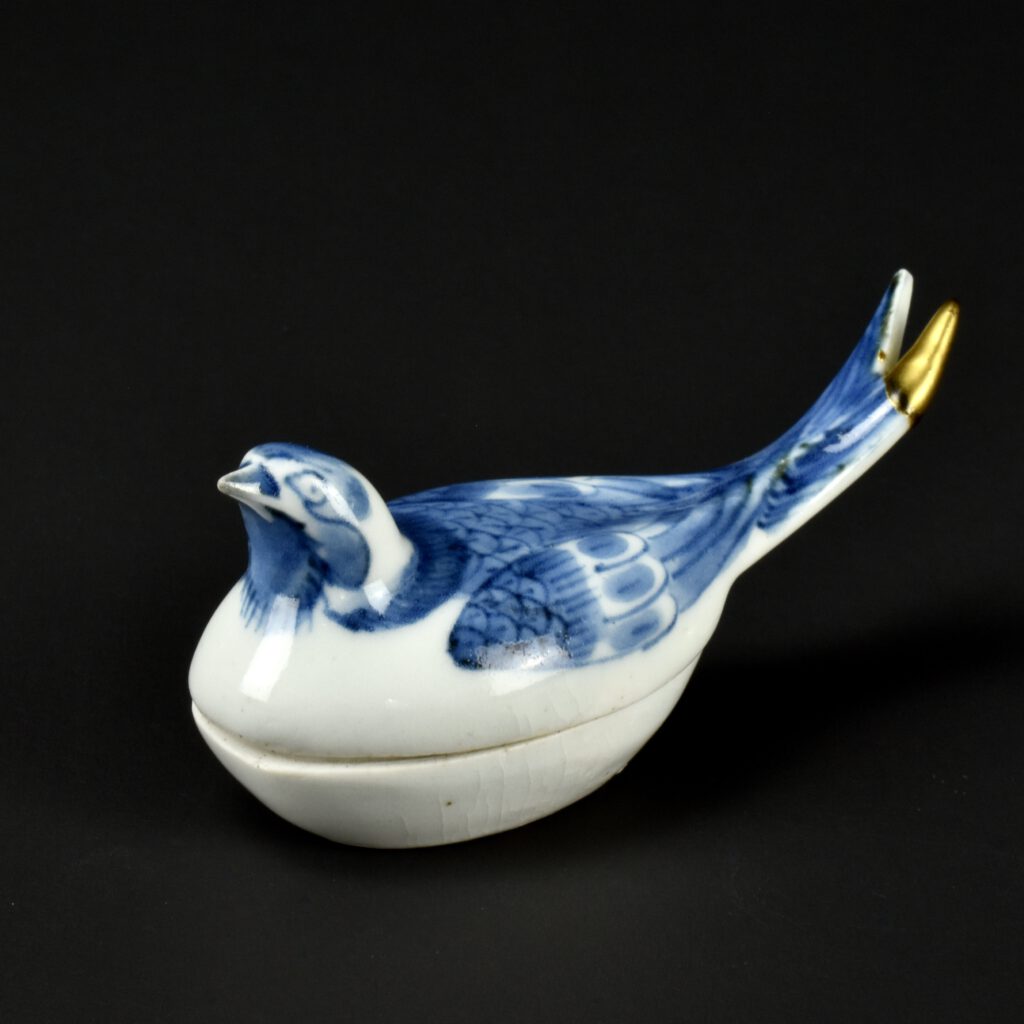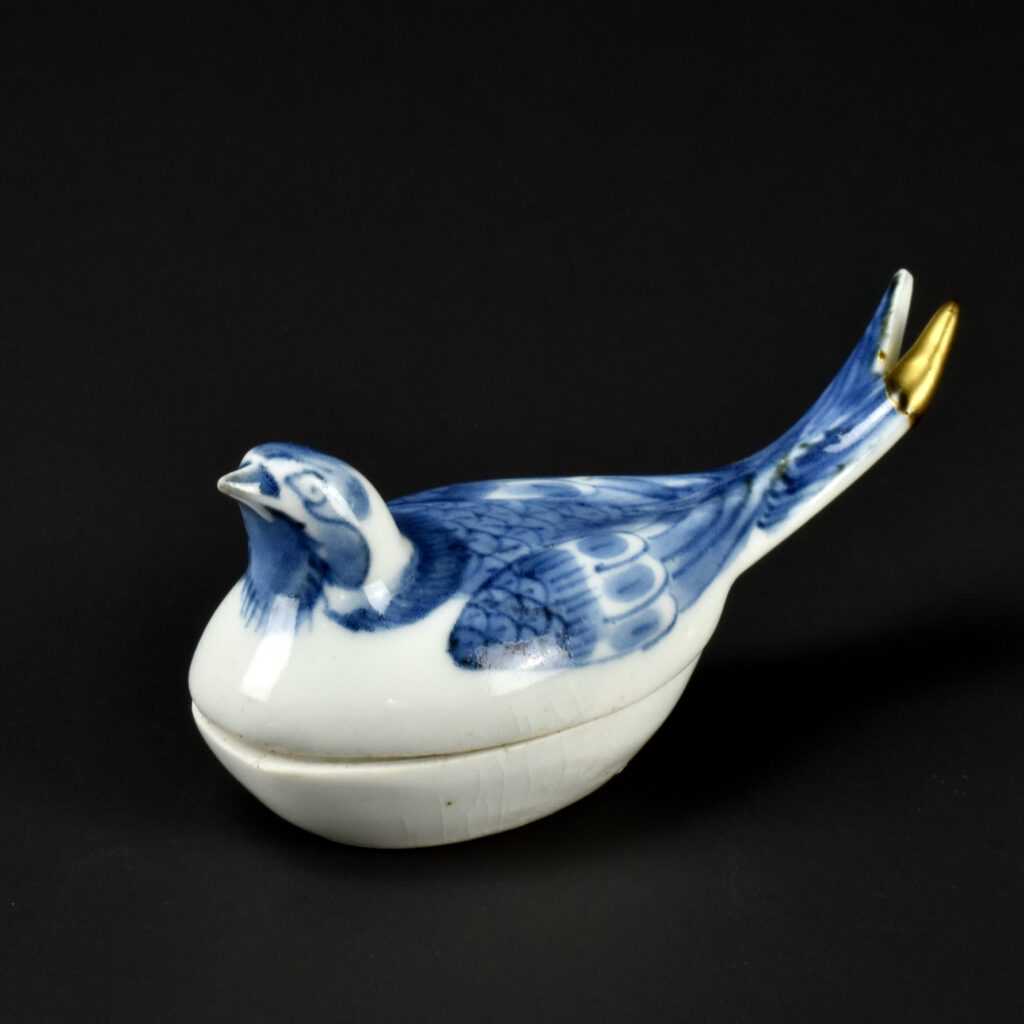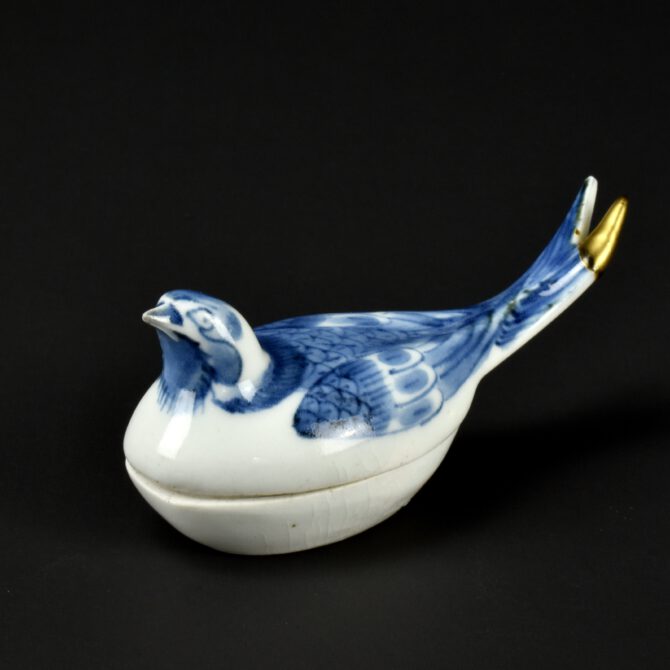
A Rare 17th Century Japanese Porcelain Bird Form Kōgō
A Rare 17th Century Japanese Kōgō in the form of a swallow c.1660-1680 made for the Japanese market. This small lightweight Arita porcelain box has a simple oval base, representing the lower section of the bird, the top is modelled as the upper part of the bird with its wings crossed. The carefully painted feathers and other details are restricted to the top, as if the Kōgō is meant to be seen from above. The attractive painting and subject make this small object very attractive in my opinion. In Japan the swallow is a symbol of good fortune, fidelity in marriage, and fertility. 17th century Japanese porcelain models of swallows are very rare, however a very similar Kōgō is in the Kyushu Ceramic Museum, it is illustrated in Complete Catalogue of Shibata Collection of 1990 (see References). Kōgō are small containers that can be made of many different materials to house pieces of incense wood or blended aromatic ingredients.
See Below For More Photographs and Information.
SOLD
- Condition
- Kintsugi, ‘golden joinery’ to one side of the tail feathers.
- Size
- Length (beak to tail ) 8.8 cm (3 1/2 inches)
- Provenance
- N/A
- Stock number
- 27193
- References
- Complete Catalogue of Shibata Collection (Contributors Saga Kenritsu Kyūshū Tōji Bunkakan. Published by the Kyushu Ceramic Museum, 1990) page 149, plate 1132.
Information
Kintsugi
Kintsugi, ‘golden joinery’, also known as Kintsukuroi ‘golden repair’ is the Japanese technique of repairing broken pottery with lacquer dusted or mixed with powdered gold, silver or platinum. As a philosophy, it treats breakage and repair as part of the history of an object, rather than something to disguise. Lacquerware is a longstanding tradition in Japan, and at some point kintsugi may have been combined with maki-e as a replacement for other ceramic repair techniques. One theory is that kintsugi may have originated when Japanese shogun Ashikaga sent a damaged Chinese tea bowl back to China for repairs in the late 15th century. When it was returned, repaired with ugly metal staples, it may have prompted Japanese craftsmen to look for a more aesthetic means of repair. Collectors became so enamored with the new art that some were accused of deliberately smashing valuable pottery so it could be repaired with the gold seams of kintsugi. Kintsugi became closely associated with ceramic vessels used for chanoyu (Japanese tea ceremony). While the process is associated with Japanese craftsmen, the technique was also applied to ceramic pieces of other origins including China, Vietnam, and Korea.
An Example of Kintsugi Repair
Robert McPherson Antiques Sold Archive 24486
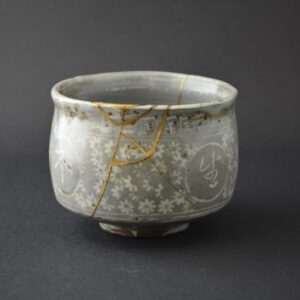
A Rare Korean Buncheong ware pottery Mishima shiooke chawan, 16th or 17th century, from the Ulrich Vollmer Collection. Perhaps made for the Japanese market. This Joseon dynasty (1392-1910) teabowl is wheel-thrown stoneware with stamped, incised and slip-filled decoration and has a pale green-grey glaze. It is extensively repaired using the Kintsugi technique and comes with a wooden box.
Condition
It is extensively repaired using the Kintsugi technique.
Size
Diameter : 9.8cm (4 cm)
Provenance
The Ulrich Vollmer Collection of Japanese Pottery and related objects.
Stock number
24486
References
Published and Exhibited : Momoyama-Keramik Und Ihr Einfluss Auf Die Gegenwart (Various authors, Gurdrun-Esters for the Keramion Foundation, Frechen, Germany, 2011. ISBN 978-3-94005-6-8.) page 33, plate 35.
